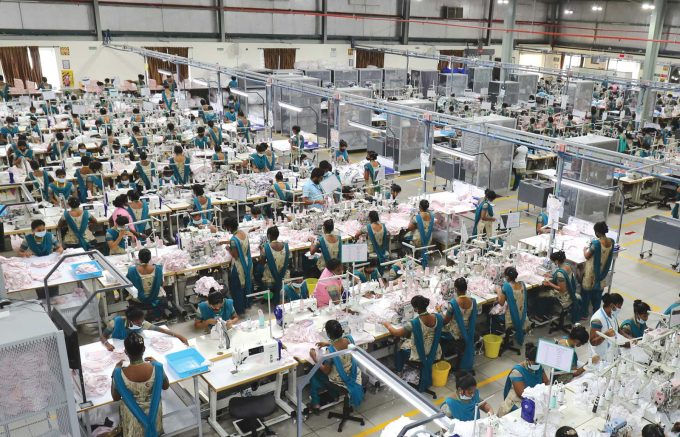TEMPERATURE MONITORING TECHNOLOGIES IN THE LOGISTICS INDUSTRY
- seabreezelogistics
- Nov 7, 2024
- 3 min read
Updated: Mar 20
Temperature monitoring is critical in the logistics sector, especially within pharmaceuticals and food safety. Various technologies are used to ensure product integrity throughout the supply chain. Below, we explore several types of digital thermometers, infrared thermometers, and data loggers utilized within the industry.

1. Standard Digital Thermometers
Description: Standard digital thermometers are commonly used for their simplicity and reliability. They provide quick and accurate temperature readings on an easy-to-read digital display.
Applications:
Monitoring ambient temperatures in storage areas at Seabreeze Logistics.
Conducting temperature checks during shipping.
2. Pocket or Pen Digital Thermometers
Description: These These compact devices are designed for portability and convenience, allowing quick temperature assessments.
Applications:
Ideal for field use during inspections by Seabreeze staff.
Quickly checking temperatures of products in transit.
3. Digital Probe Thermometers
Description: Equipped with a probe, these thermometers can measure the internal temperature of products, ensuring accurate readings of sensitive items.
Applications:
Checking the temperature of refrigerated items, such as pharmaceuticals and perishable goods at Seabreeze Logistics.
Verifying temperatures in food logistics.
4. Smart Digital Thermometers
Description: Connected devices that sync with mobile apps or cloud services for real-time monitoring and alerts.
Applications:
Providing remote monitoring capabilities for Seabreeze Logistics.
Allowing instant notifications if temperatures fall outside acceptable ranges.
5. Wireless Digital Thermometers
Description: Utilizing wireless technology, these thermometers transmit temperature data to a central monitoring system without the need for manual checks.
Applications:
Ideal for remote locations where manual monitoring is impractical at Seabreeze Logistics.
Allowing for continuous temperature monitoring in storage facilities.
6. High-Accuracy Digital Thermometers
Description: These thermometers offer enhanced accuracy, often used in laboratory settings or critical applications requiring precise temperature control.
Applications:
Monitoring temperature in controlled environments such as laboratories or specialized storage units at Seabreeze Logistics.

Infrared thermometers are valuable tools at Seabreeze Logistics, particularly for quickly assessing temperatures without direct contact. Below are several types of infrared thermometers utilized in our operations:
1. Handheld Infrared Thermometers
Description: These portable devices allow users to measure the temperature of surfaces from a distance, providing immediate feedback.
Applications:
Conducting quick checks on refrigerated trucks or containers.
Measuring surface temperatures of storage equipment.
2. Fixed Infrared Thermometers
Description: Mounted devices that provide continuous temperature monitoring of a specific area or process.
Applications:
Monitoring the temperature of conveyor belts or production lines.
Ensuring that storage areas maintain proper temperatures.
3. Infrared Thermography Cameras
Description: Advanced imaging devices that create thermal images to visualize temperature distribution over a surface area.
Applications:
Identifying hot spots in storage areas or machinery.
Conducting preventive maintenance by monitoring equipment temperatures.
4. Non-Contact Infrared Thermometers
Description: Devices designed to measure the temperature of objects without making physical contact, useful for sensitive materials.
Applications:
Quickly checking the temperature of products during transit without compromising their integrity.
Ensuring proper temperatures in delicate shipments like pharmaceuticals.

Data loggers are essential for monitoring and recording temperature data over time at Seabreeze Logistics. Here are several types of data loggers utilized in our operations:
1. USB Data Loggers
Description: Simple devices that can be plugged into a computer to download recorded data, often used for short-term monitoring.
Applications:
Suitable for tracking temperatures during single shipments.
Ideal for environments where minimal data logging is required.
2. Wireless Data Loggers
Description: These loggers transmit temperature data in real-time to a central system, allowing for continuous monitoring without manual intervention.
Applications:
Providing remote monitoring capabilities for large distribution centers at Seabreeze Logistics.
Allowing immediate alerts if temperature deviations occur.
3. Temperature and Humidity Data Loggers
Description: Devices that measure and record both temperature and humidity, providing a comprehensive view of environmental conditions.
Applications:
Monitoring sensitive pharmaceuticals that require specific humidity levels.
Ensuring proper storage conditions for perishable goods.
4. Multi-Channel Data Loggers
Description: Advanced devices that can monitor multiple points or channels simultaneously, often used in complex environments.
Applications:
Monitoring different storage areas within a facility.
Tracking temperatures of multiple shipments at once.
5. Real-Time GPS Data Loggers
Description: Combining GPS capabilities with temperature logging, these devices provide location tracking alongside temperature data.
Applications:
Tracking temperature-sensitive shipments in transit while providing location information.
Ensuring compliance with regulations during transport.
Conclusion
Utilizing the appropriate types of digital thermometers, infrared thermometers, and data loggers is essential for maintaining product integrity, particularly for temperature-sensitive items like pharmaceuticals and perishables in logistics. Leveraging these technologies ensures compliance with regulations, protects product quality, and ultimately safeguards the health and well-being of consumers.


